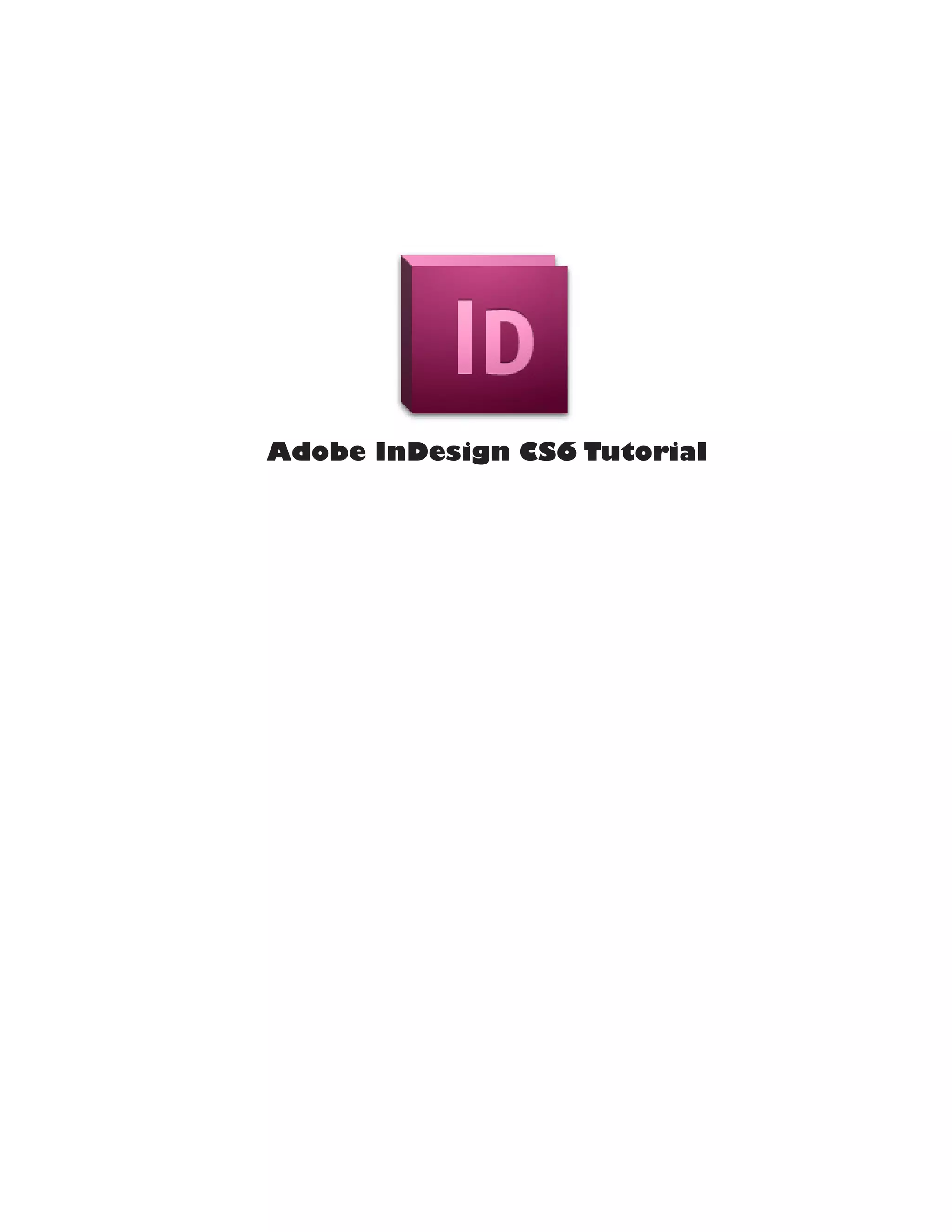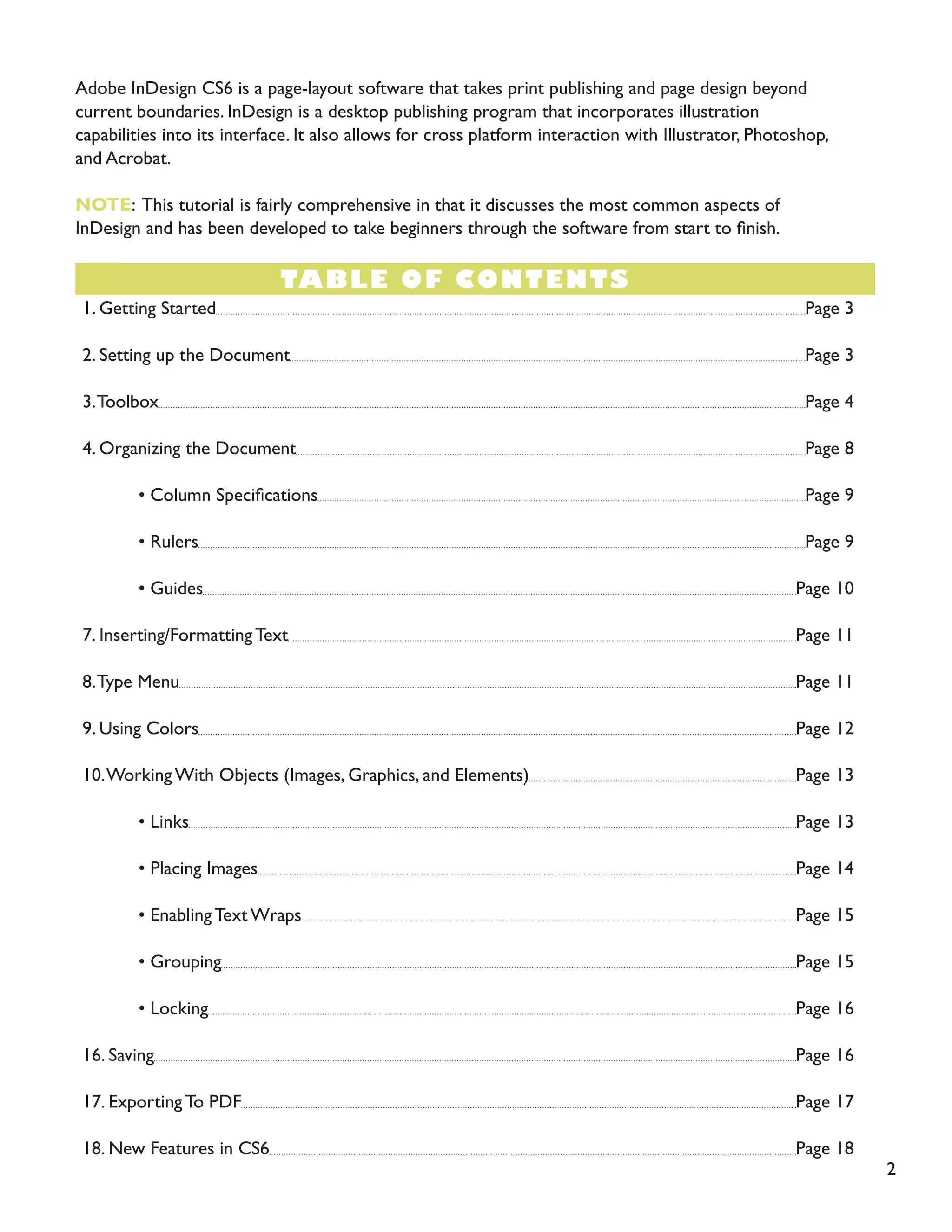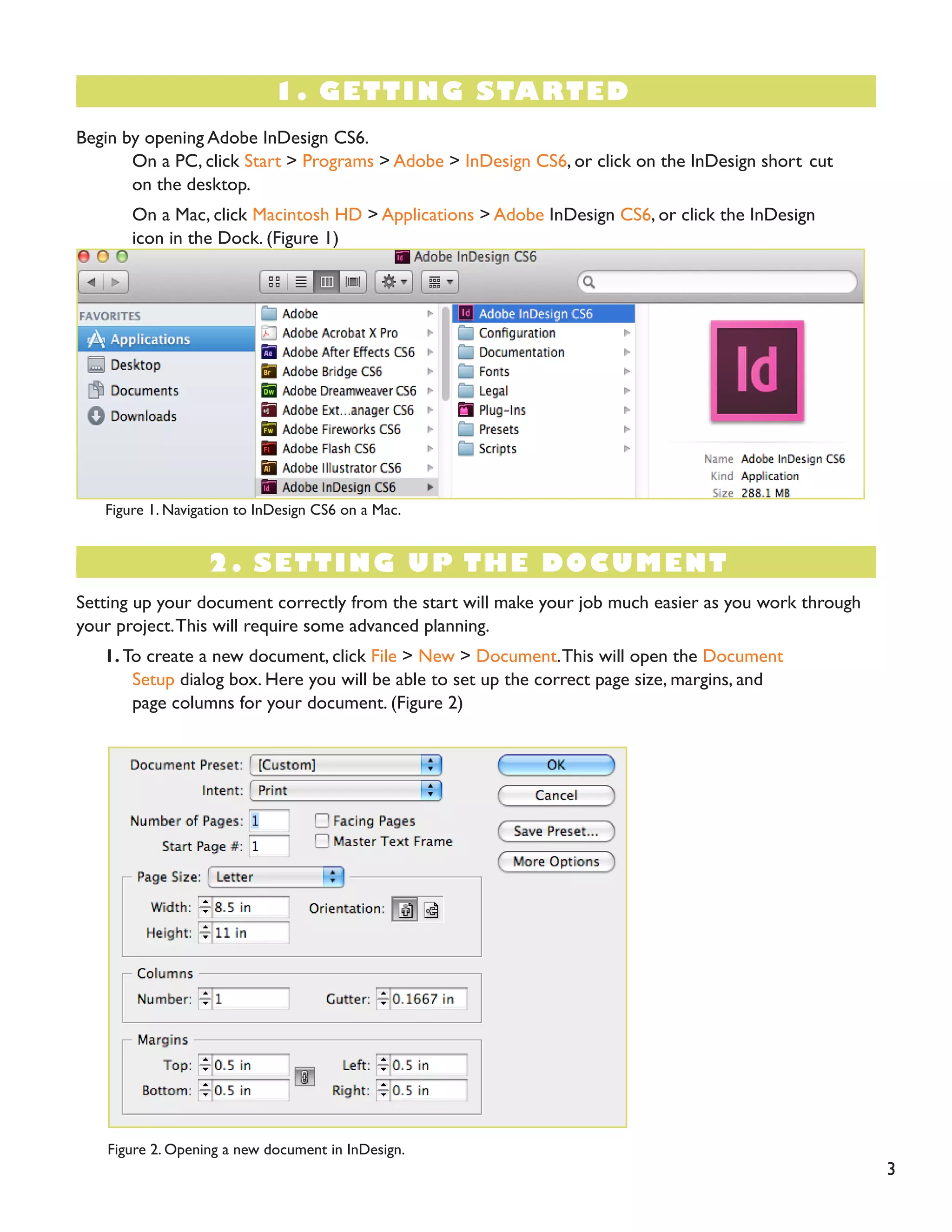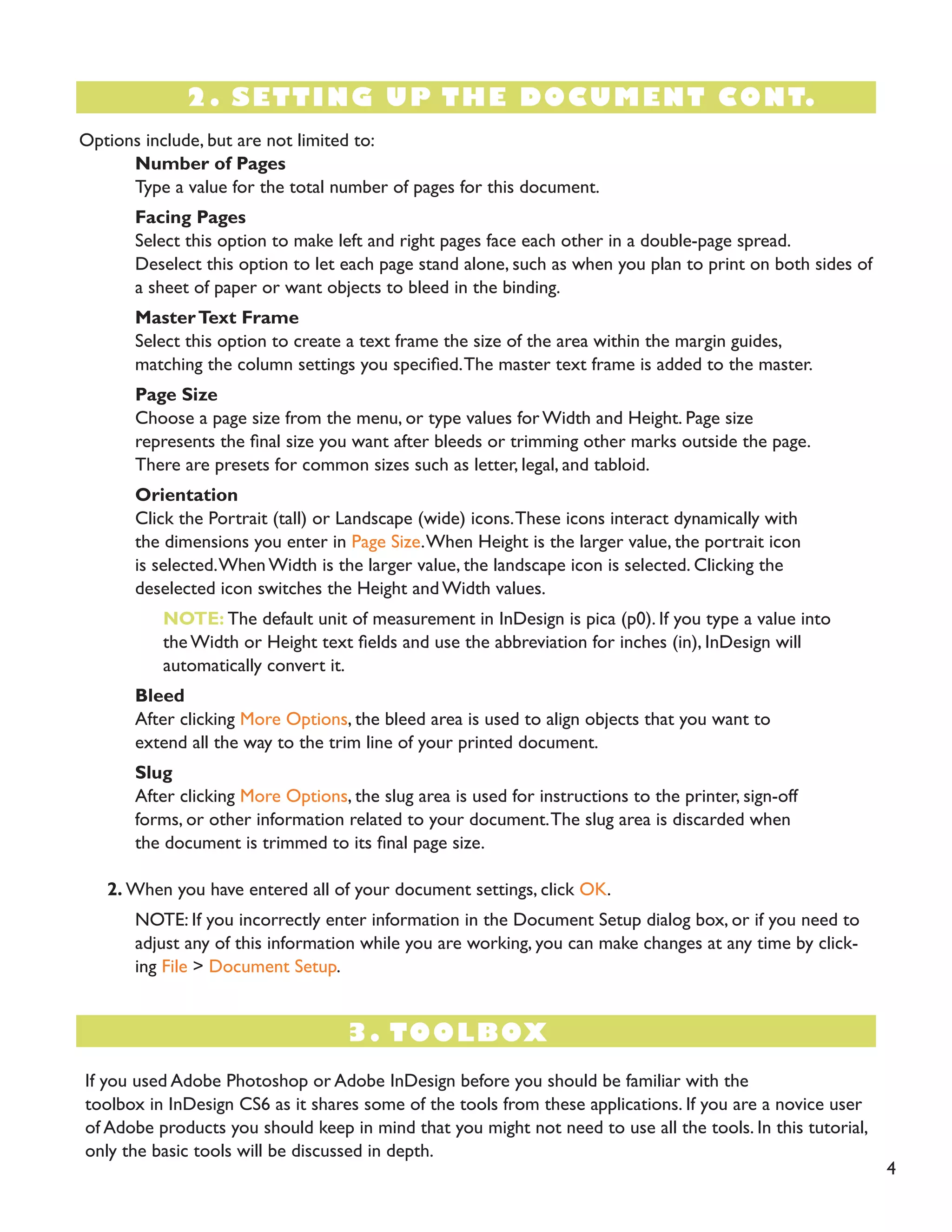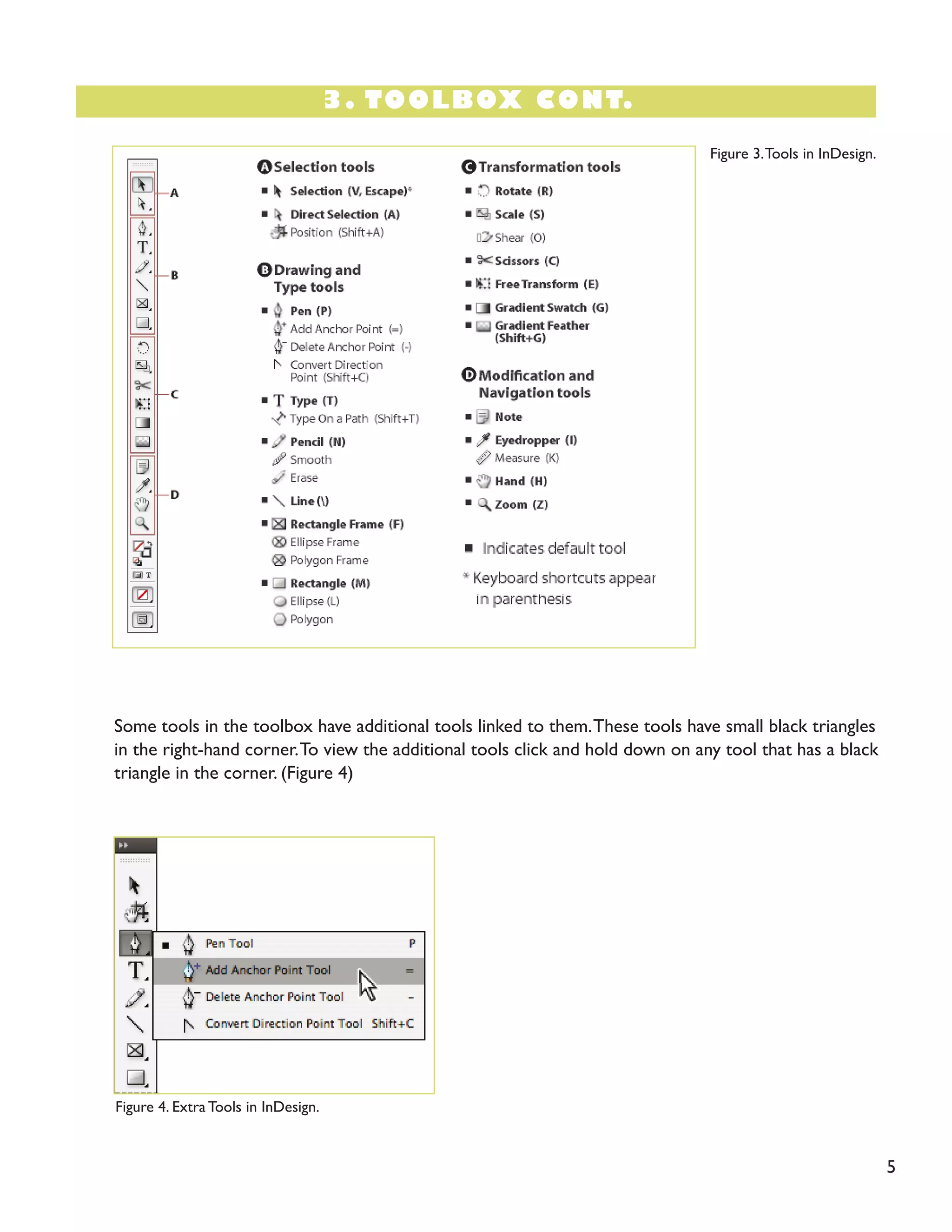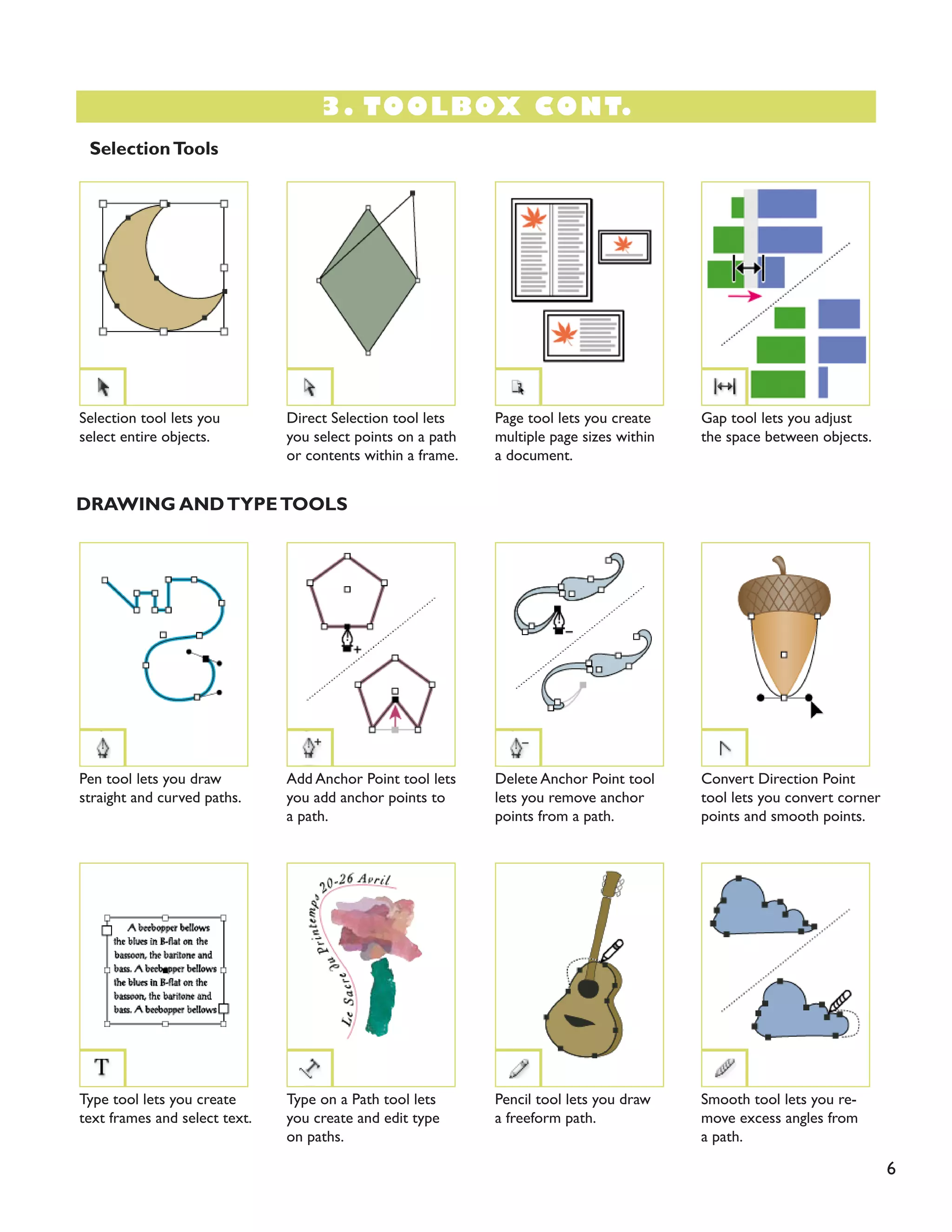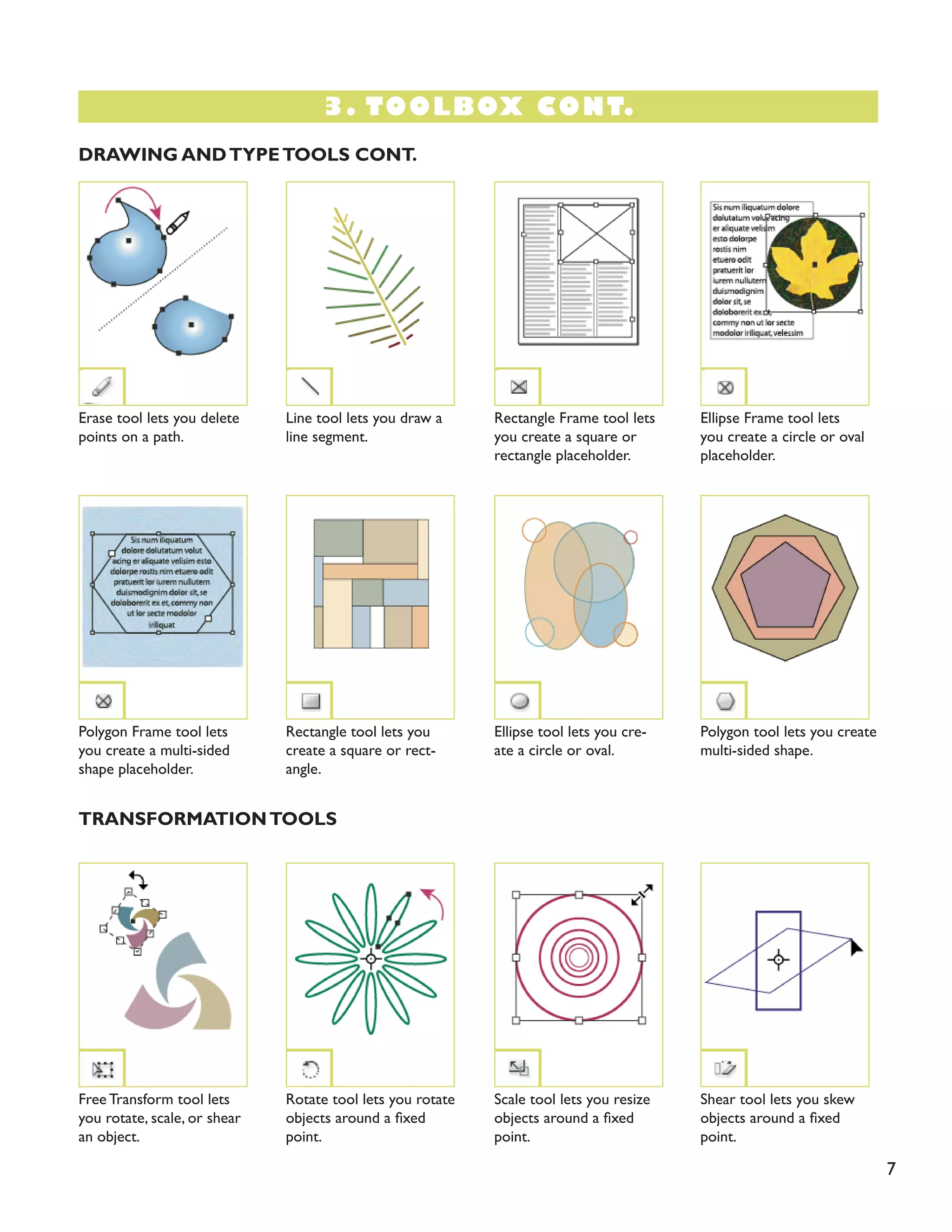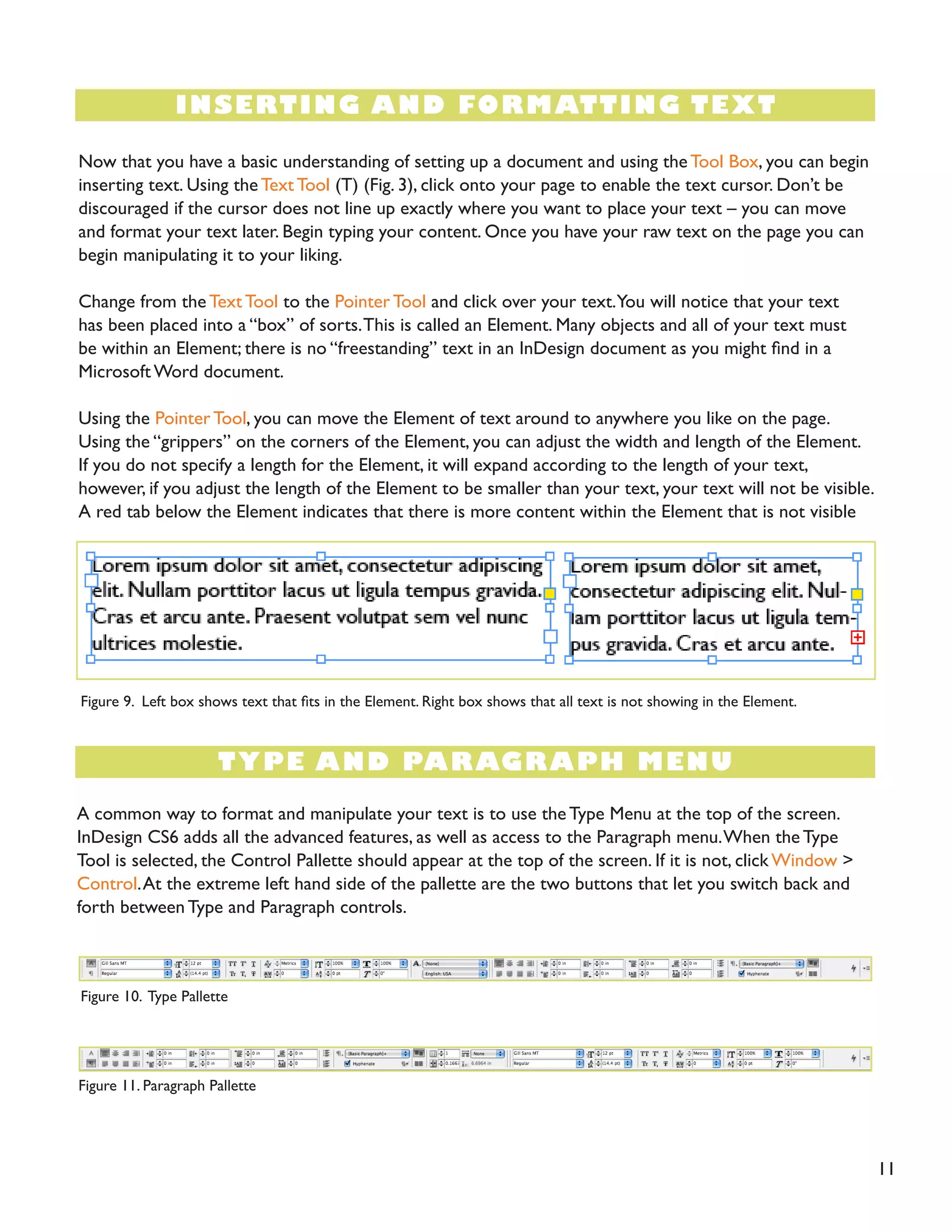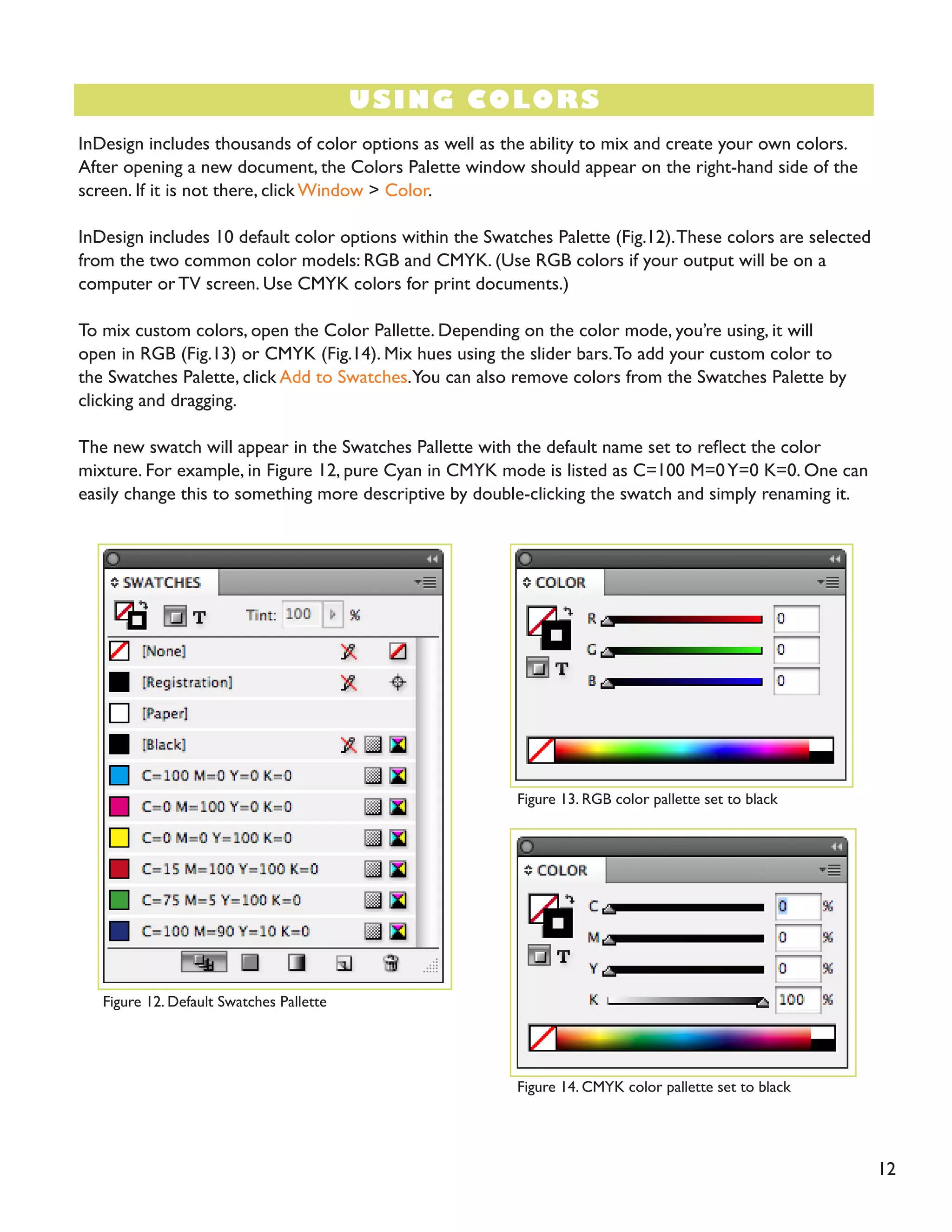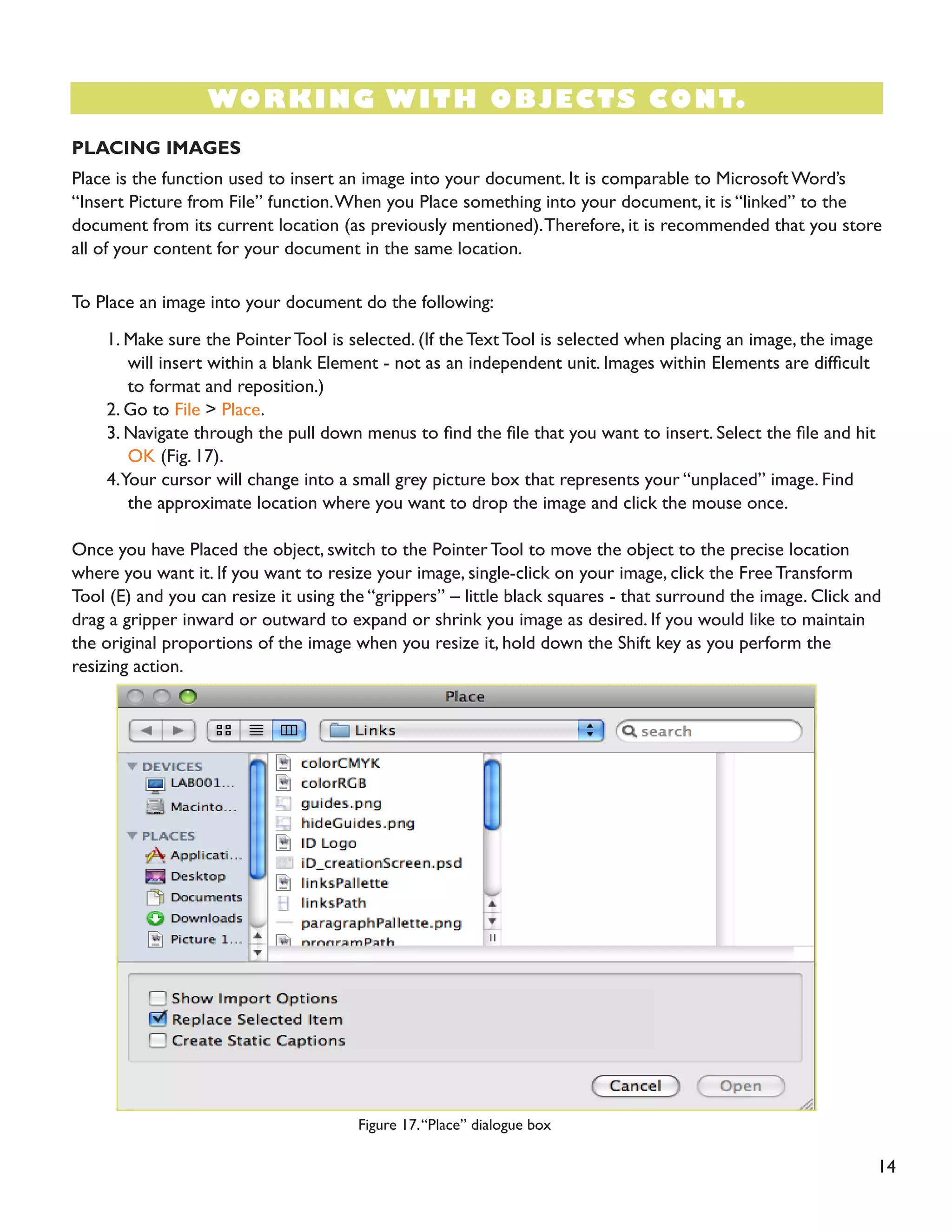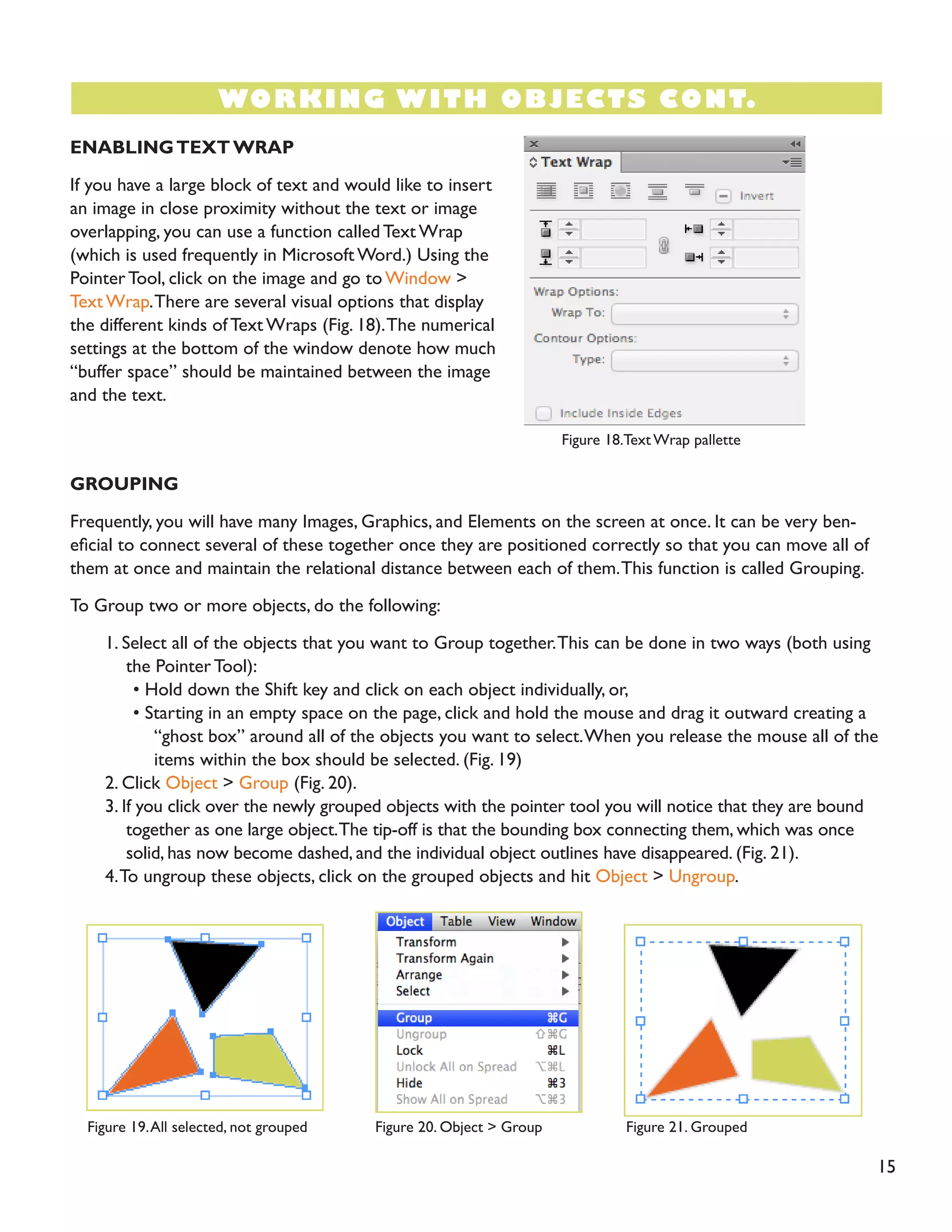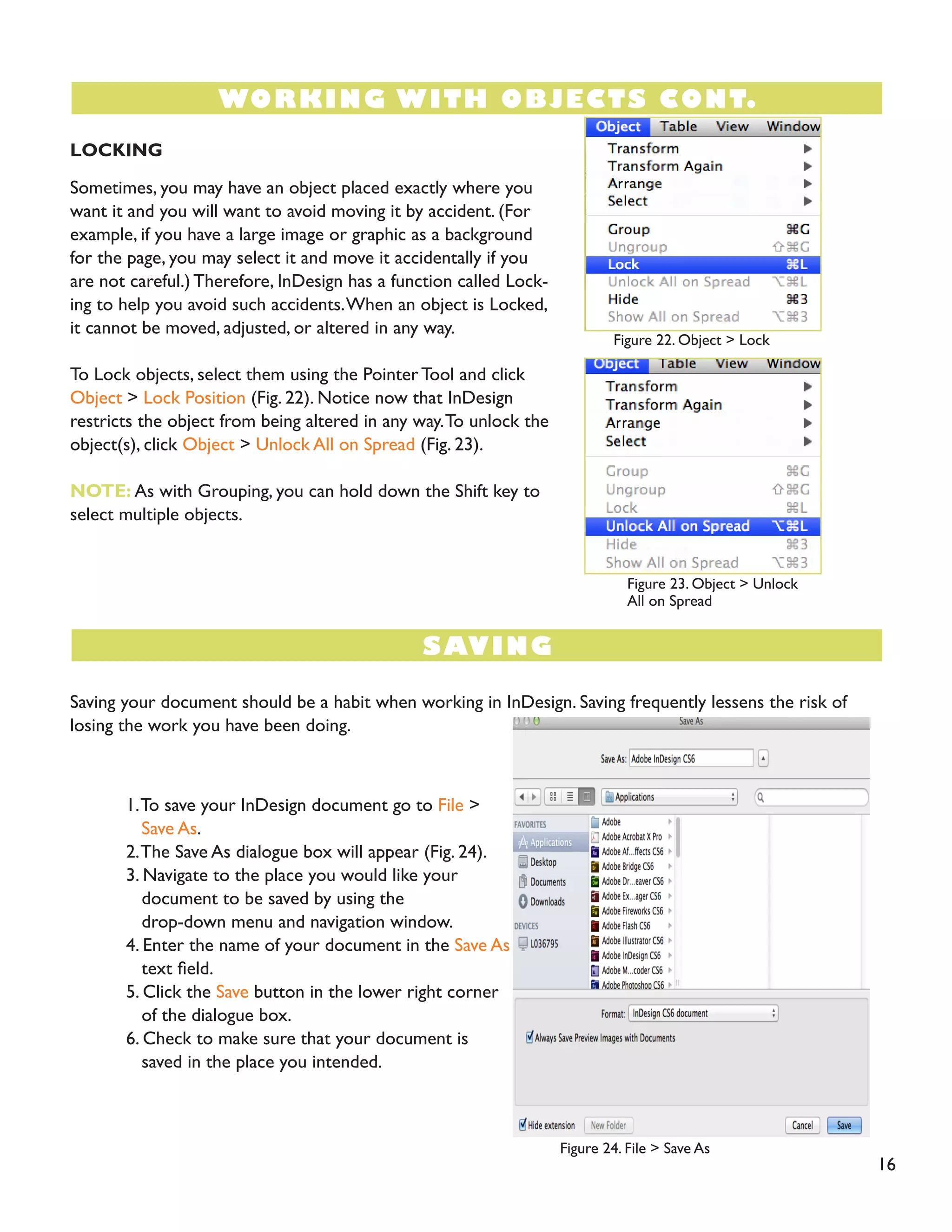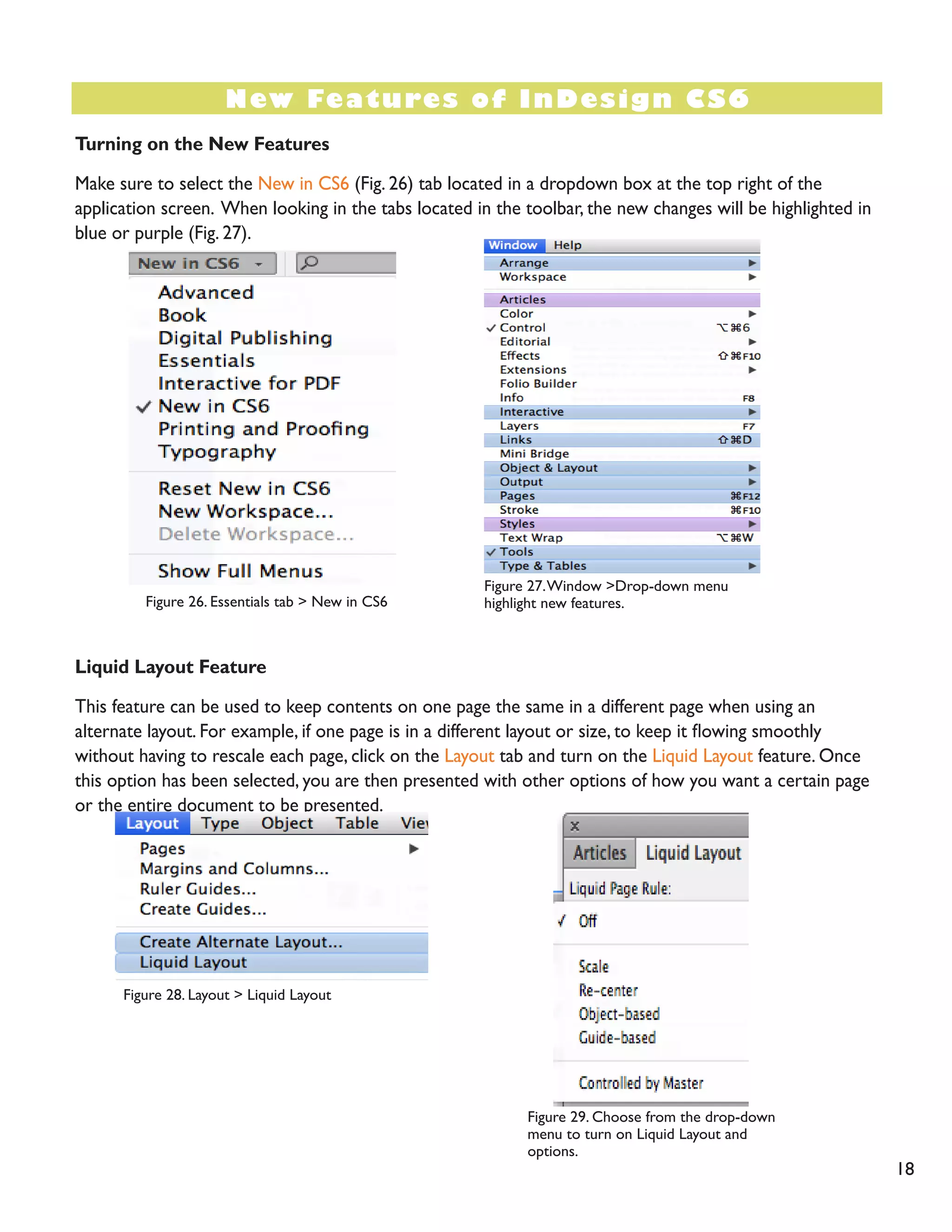This document provides a tutorial for using Adobe InDesign CS6. It discusses getting started, setting up documents, using the toolbox and its tools, organizing documents using columns, rulers and guides, inserting and formatting text, working with objects like images and graphics, and other features like saving, exporting to PDF and new features in CS6. The tutorial is comprehensive for beginners and covers the software from start to finish.
